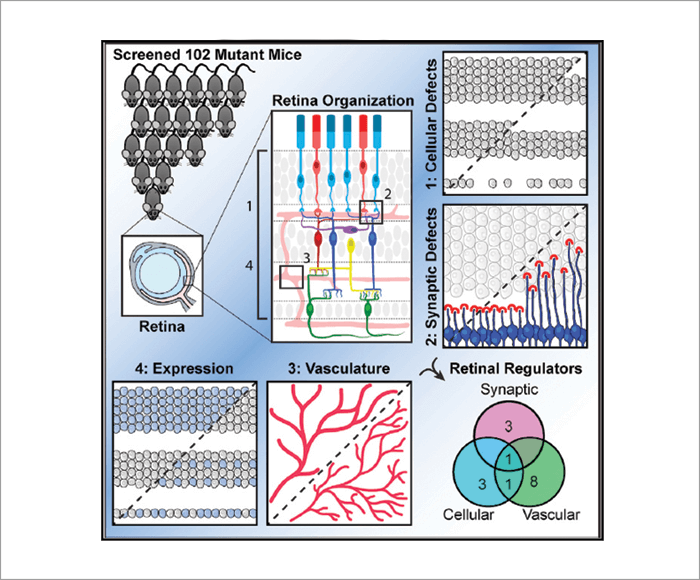
The more complex a tissue’s function, the more complex its structure. The retina is no exception; its intricate function depends on the precise organization of its neural and vascular components. And though vision relies on retinal structure, little is known about what actually drives – and controls – such precise regulation. A team from the Baylor College of Medicine, USA, developed a high throughput retina screening tool – INSiGHT – to dig deeper into the key genes driving retinal regulation.
By analyzing 102 mutant mouse lines for topographic patterning of blood vessels and retinal cells, cellular integrity and synaptic organization, the team identified 16 key genes involved in regulating retinal structure and function (Figure 1). “The results of our study represent a leap forward in our ability to identify and map gene function in the eye,” says Melanie Samuel, corresponding author (1). “One surprising feature was the diversity in the biological functions of the genes we uncovered, which highlights the importance of conducting unbiased screens in animals in order to map regulators of the retina, brain and other organ systems.” The team hope that identifying these 16 genes will enable further understanding on the pathways that control normal retinal organization and function. They also hope it will help identify new causes of retinal dystrophy, as well as provide an opportunity to model the disease process and perhaps even test potential therapies. But their work also feeds into a bigger picture: “All of the genes we identified have orthologs in humans, and several have been implicated in rare forms of human brain disease. This is important because, from a biological perspective, the retina is a literal window into the brain,” says Samuel. “This study thus provides a platform for understanding the pathways and pathologies that affect not only the retina but also the brain.”
References
- NE Albrecht et al., “Rapid and integrative discovery of retina regulatory molecules”, Cell Rep, 24, 2506–2519 (2018). PMID: 30157441.
